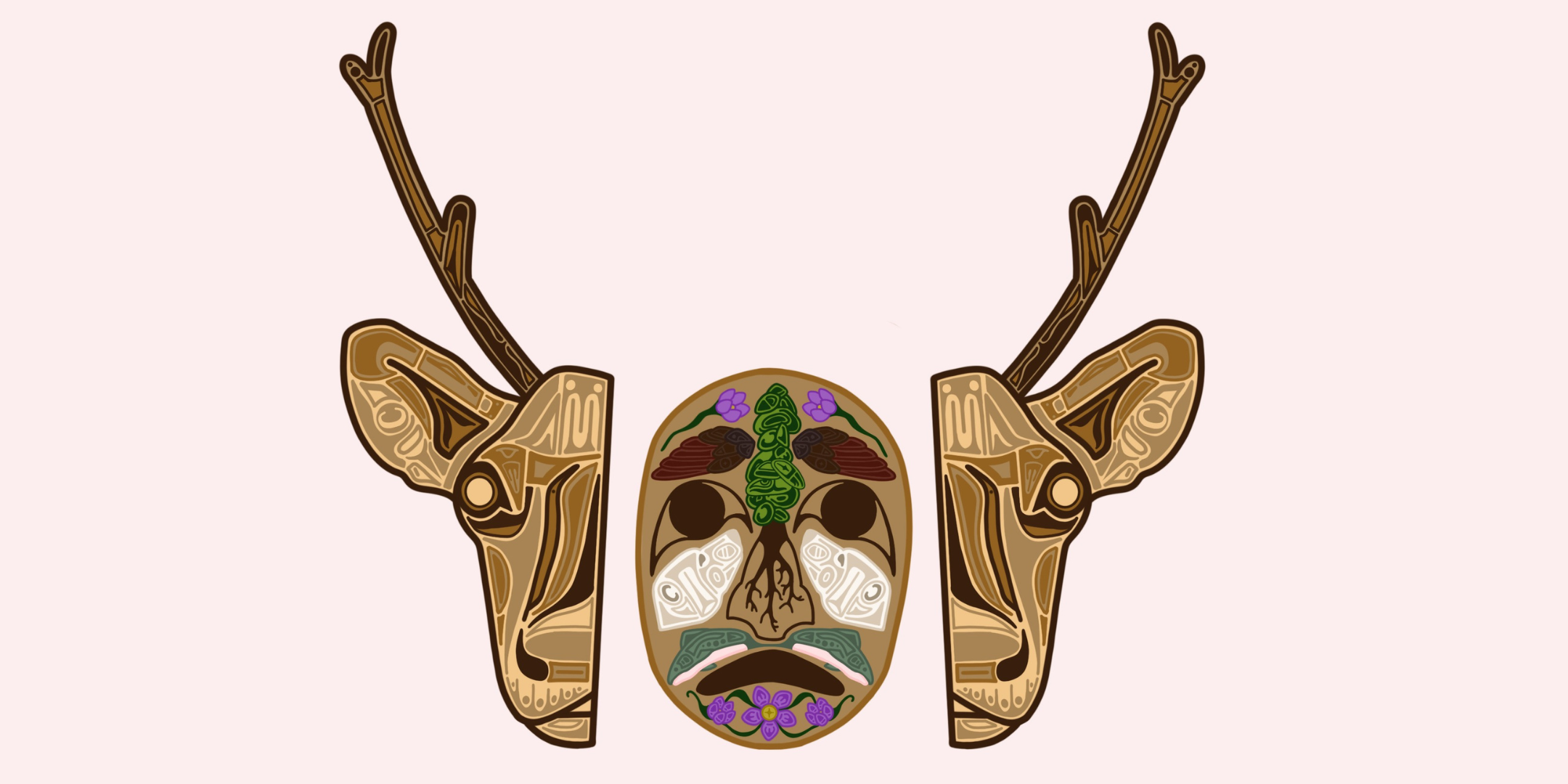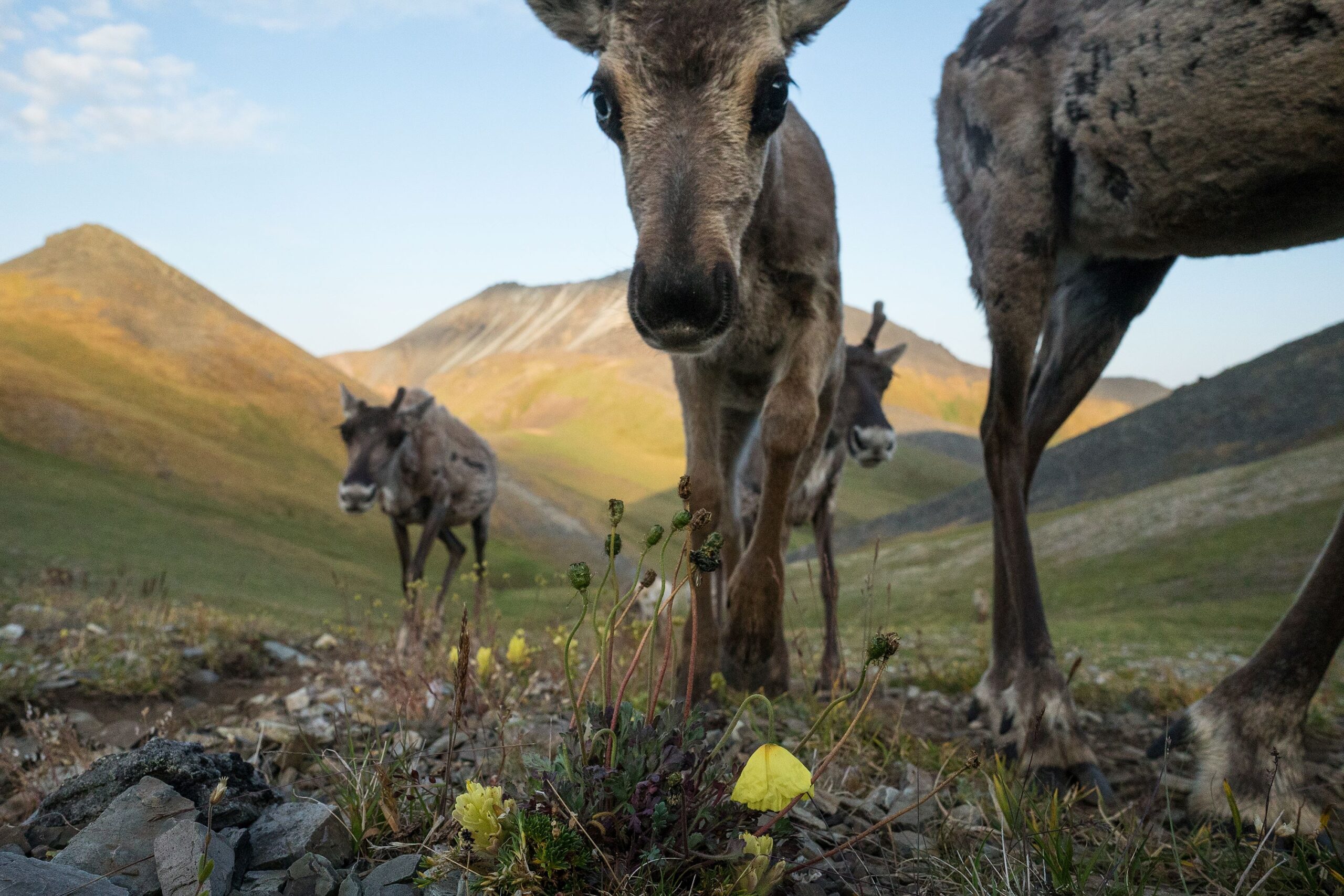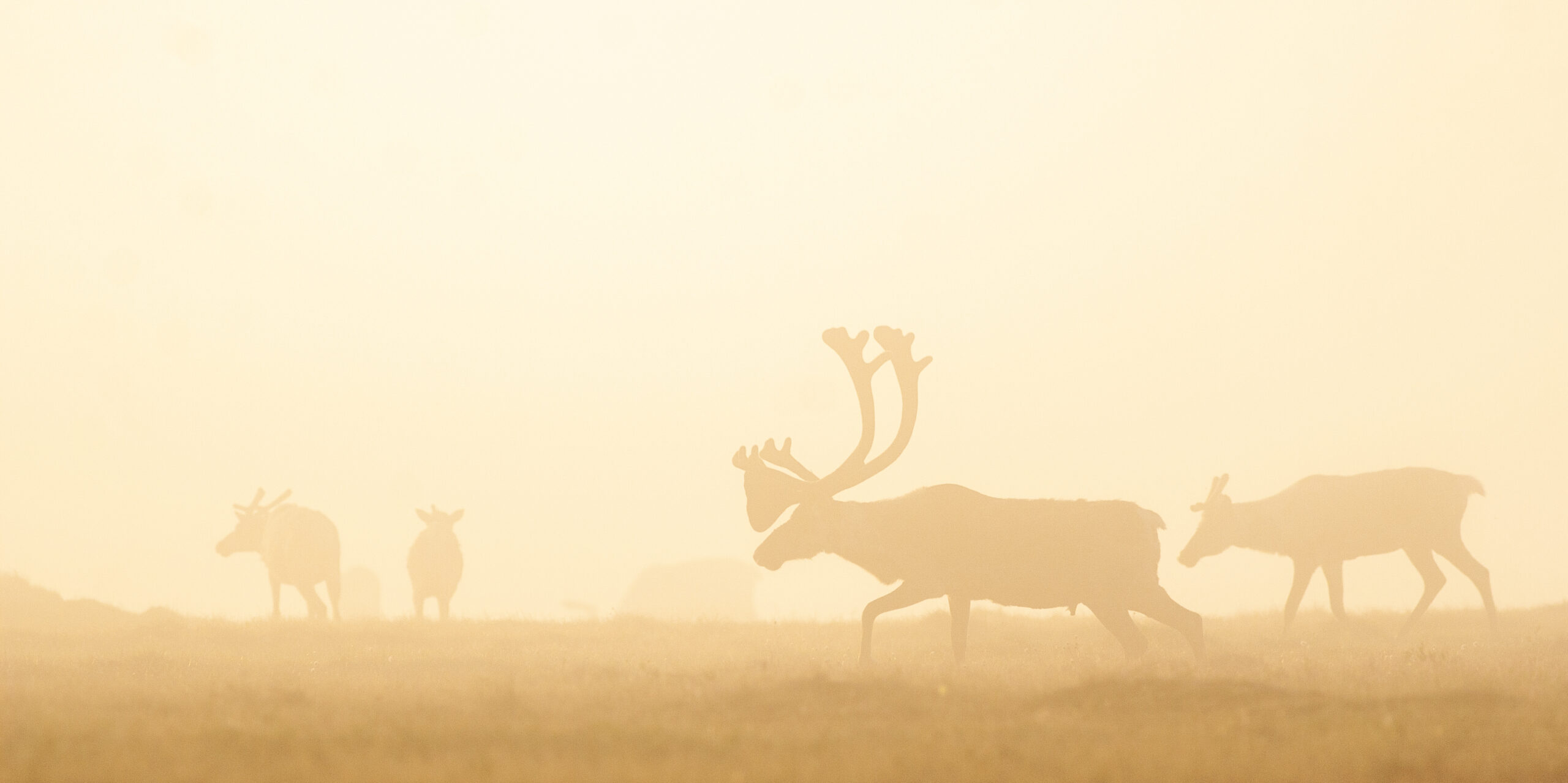A journey of carving and dance for caribou
Written by Aiden Duncan, Conservation Intern
July 31, 2023
Tansi! As a Cree/Metis 2spirit man originally from Manitoba my culture is very important to me, so I have always had a passion for protecting the environment. My grandmother attended Indian day school so my family suffered a loss of culture, but as I have gotten older I have started learning about my peoples traditional views on conservation and how that ties into modern day science, and my love for the environment. Over the years I have done everything I can to reconnect with my culture. Whether it be through art, ceremony, teachings, nature or other evolving practices.
This summer I want to gather people from all different walks of life and cultures, and to celebrate our individuality, spirit, and passion for what unites us. There are so many different interests, hobbies, and beliefs that can all be connected to conservation and protecting the environment. For me that is my culture, art, and the land that we share with all the other beings that walk among us.
As part of my internship with CPAWS Yukon, I will be carving a traditional Indigenous transformation mask and sharing my journey with you. For centuries Indigenous people have shared knowledge in a way that today can sometimes get lost. Teachings were not kept on paper, but passed on through music, dance, and art.

Draft mask design by Aiden Duncan.
It is a common misconception that Indigenous people want to return to living completely off the land in teepees. That kind of lifestyle isn’t a reality anymore due to climate change, environmental issues, and how society runs today. We want to keep our culture alive and remind people that it’s important to look at traditional ways of living when talking about conservation in today’s world. Sometimes “conservation” can be difficult to grasp, but approaching big daunting ideas through traditional teachings and community is key to understanding.
The mask will be accompanied by a series of powwow dances that tell the story of the Porcupine caribou and the Arctic National Wildlife Refuge, located just across the Yukon-Alaska border. Often referred to as “America’s Serengeti,” the Arctic Refuge is an essential space for over 200 different species from the mighty Ice bear to the smallest baby loon. The area is home to many animals, and a sacred and safe space for many who may just need a temporary home, like the Porcupine caribou.

Photo by Peter Mather.
The refuge provides protection and stability for the Porcupine caribou. It is an important stop along their journey of 2400 kilometers, the longest land migration in the world, through Alaska, the Yukon, and the Northwest Territories. Here they give birth to their calves, and the amazing wild space provides nutrients for the calves and moms to stay strong and grow.
Not only does the Arctic Refuge keep the caribou alive, it is also a lifeline for Indigenous people like the Gwich’in who depend on them. These animals nourish communities in need and help them keep their culture alive. The Porcupine caribou herd is one of the healthiest in the world thanks to the Gwich’in peoples efforts to protect these beautiful animals and their wild spaces, all while treating them with respect and honour.
Back home in Manitoba, boreal caribou are listed as a threatened species provincially and federally. Their population is decreasing, and the caribou aren’t traveling as far south as they used to because of urban development. When I visit museums and see beautiful historical creations using caribou hide, I feel disconnected from my ancestors. One of the most important reasons to protect these animals is to preserve the traditional teachings in northern communities. It can be hard to grasp just how much that could affect a person, but I know. I live in a place where those teachings have been lost over time, although many people are trying to revitalize and preserve them.
The population of Porcupine caribou is increasing by 3.7% per year, so sometimes it is easy for us to push loss out of our minds. Unfortunately, that can change quickly and drastically. As barren-ground caribou, their species is considered threatened across Canada. While there isn’t any active drilling in the Arctic Refuge right now, oil and gas development has long threatened the refuge. The herd is very vulnerable.
My project will share the story of the Porcupine caribou. I hope it draws people in and peaks their curiosity. The mask will represent the circle of life, and the dances will share the migration, strength, and beauty of the caribou, along with the struggles they face. I believe when people learn a meaningful story or even make a small change to live a more eco-friendly life, it can deepen other connections to the land and the wildlife that live among us. Nature is something that connects all of us together, and it isn’t too late to protect the Arctic Refuge. We need to take steps towards a better tomorrow for ourselves and for our future generations.

Photo by Malkolm Boothroyd.
